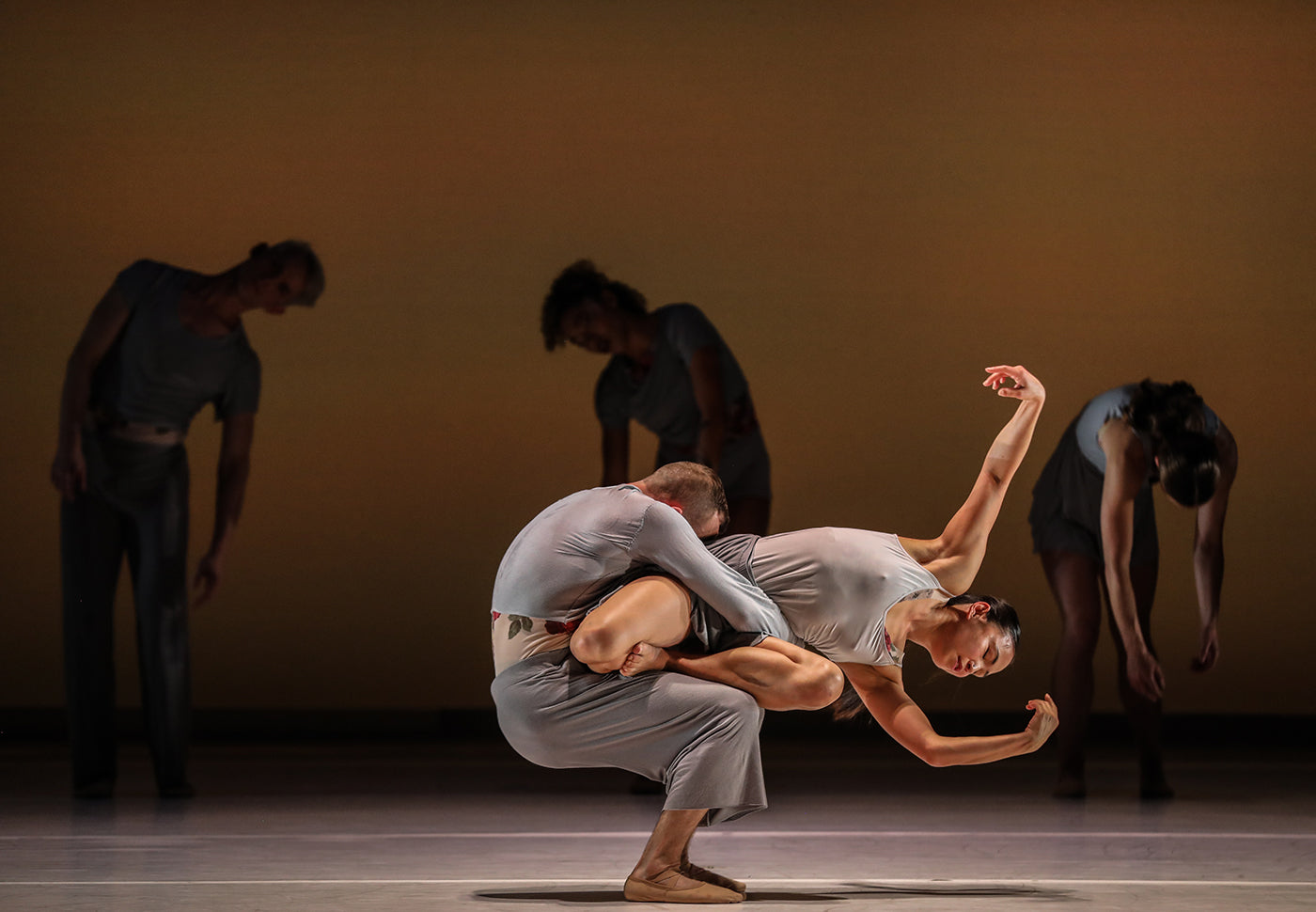There are no principals, soloists, or coryphées in the 21-member company. But in the company’s classical works, at least two per season (“Nutcracker” and a springtime story ballet marketed as a Mother’s Day treat) traditional rankings die hard. Even without “principal” titles, certain dancers are counted on to fill principal roles, for good reasons: stamina, strength, aplomb, and presence, which can develop through experience and artistic maturity regardless of ascension through formal ranks. Such classical ballets usually require members of the second company, Ballet Austin II, to fill out the corps de ballet.
In contemporary works, however, casting can be felicitously unpredictable. A dancer you’ve had your eye on might be thrust into a central role. Or—better yet—all the roles might be central. Ballet Austin, in my experience, is most enthralling in works that showcase the ensemble. Thanks to the company’s engagement with emerging and mid-career choreographers—a legacy that will be continued thanks to a recent endowment for new choreography—we’ve seen the company in works by Gabrielle Lamb, Nelly von Bommel, and Pam Tanowitz, among others, that place the ecosystem of the ensemble up front, as does Lubovitch’s “Dvořák Serenade” (2007).
Set to several movements of Dvořák’s gentle Serenade in E Major, performed live by the Austin Symphony Orchestra under the benevolent direction of Peter Bay, the work is both a lullaby and a foray into the subconscious. In white gossamer nightgowns and pajamas and in soft shoes, the dancers begin in shadows, with delicate gestures—circling of the wrists and expansive swipes at something, perhaps cobwebs or murkiness—and then ebb and frolic in amber light (the lighting was designed by Jack Mehler). There is a lead couple in this work, which was danced by Ashley Lynn Sherman and Oliver Greene-Cramer. Sherman dances principal roles in classical and neoclassical work, but I find her most interesting when she’s not weighed down by jewels or expected to show off her splits. In “Dvořák Serenade,” one could zoom in on her filigreed lyricism and Greene-Cramer’s attentive partnering and quiet aplomb. A marvelous quartet—Jaime Lynn Witts, Grace Morton, Ian J. Bethany, and Kevin Murdock-Waters—conveyed a hint of wildness that surfaced in full in the ensemble, especially in the final movement, when a skipping step crescendoed into a driving sequence performed with great precision. It was quite the puffer, but when the dancers halted to face the audience, moving only one arm softly to the now-calm music, their chests didn’t heave; the energy, instead, emanated throughout their collective calm.
The preceding work, Mills’s “Wolftanzt” (2011), and the following one, “Liminal Glam” (2008), were, programmatically and aesthetically, at opposite ends. “Wolftanzt,” set to Mozart’s Piano Concerto No. 12, performed live by the symphony and guest pianist Michelle Schumann, is a delicate prance with surprise expansiveness. The work has a solo female lead, danced by Oren Porterfield, who anchors two lead couples and an ensemble, all in rosy costumes and lighting (against a backdrop with a rather limp projection of stenciled roses—wouldn’t pure color have been better?). Neoclassic movement (the women are on pointe) is colored by tinges from the 18th century—the baroque as well as the thrill of uncharted territory. On opening night, Porterfield, small and intense, at first seemed limited in her reach, but as the piano returned her theme again and again, she seemed to find a bit more joy and range. Perhaps the upcoming tour will give her stage time—a limited resource for this company, whose local performance runs often last only one weekend—to expand into the role.
The music for “Liminal Glam,” the final work, is a recording that made me pine for the symphony: the blaring copy of Philip Glass’s Concerto Fantasy for Two Timpanists and Orchestra sounded very 2008. As with “Wolftanzt,” I’d seen “Liminal Glam” before. I’m still not a fan of the short, thin, Frisbee-style tutus (by Susan Branch Towne), which cut the women’s lines at the hips and bounce above their bottoms in an odd way. A set of lights pop like light giant flashbulbs at the beginning and end of the work, framing a purple and blue ambiance, designed by Tony Tucci, that overlays the gray costumes and highlights the pop-color piping that swirls around the legs and bodices. Like Mills, I am moved by Glass’s driving orchestra and the rumbling timpani. But the space-age costumes, leg-splaying, and I’m-too-sexy tone seem like a bit of a joke. Like Les Ballets Trockadero de Monte Carlo’s Cunningham parody, “Patterns in Space,” in which the characters in the ballet (old-school Russian ballet dancers) approach Cunningham earnestly but from an impossibly obstructed view, “Liminal Glam” seems to approach something like Forsythe from around a blind curve.
Nevertheless, the ballet evinced swatches of strength in the ensemble, in technique and in their common devotion (as with “Patterns in Space,” their devotion is loveable) to the work. And nevertheless, the audience liked the flashy ballet. Overheard upon leaving the theatre: “That was totally not what I expected!” and “That was very avant-garde.”









comments